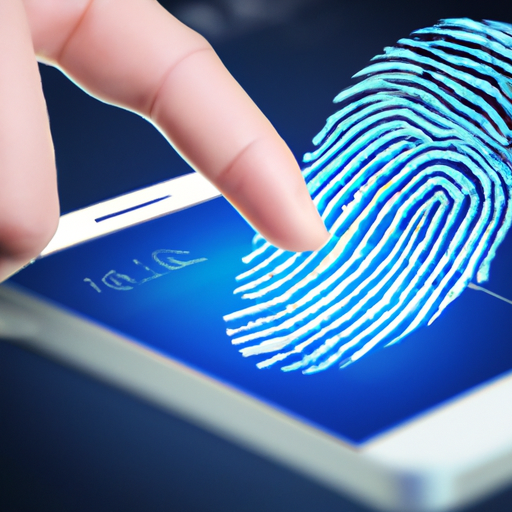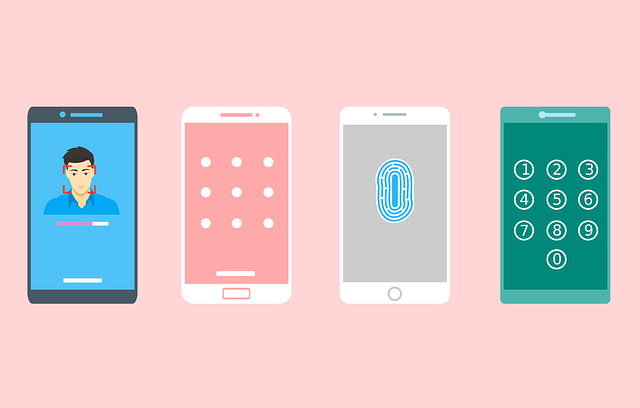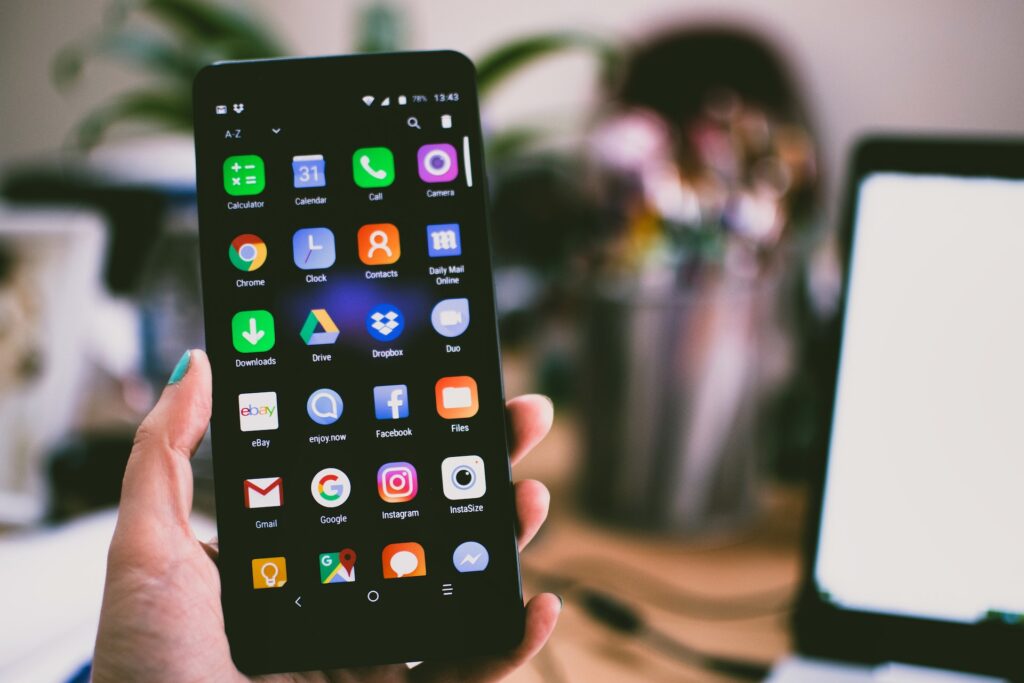With much of our lives on mobile devices mobile security is a crucial aspect when it comes to protecting your data and personal information, and having the right security features can provide you with peace of mind. Additionally, biometric features such as fingerprint recognition and facial recognition add an extra layer of security and convenience to your mobile device.
Nowadays, most mobile devices come equipped with a variety of security features. One commonly found security feature is the ability to set a passcode or pattern lock on your device, which prevents unauthorized access. In addition to this, many mobile devices now also offer fingerprint recognition, allowing you to unlock your device using your fingerprint. Facial recognition is another popular biometric feature, which uses advanced algorithms to scan and recognize your face, providing a secure and convenient way to access your device. These security and biometric features work together to ensure that your mobile device and the information stored on it are protected from unauthorized access.

Introduction
Mobile devices have become an integral part of our daily lives. We use them for communication, and entertainment, as modern keys to unlock cars and doors to hotels and homes and even financial transactions. With the increasing reliance on these devices, ensuring their security has become paramount. In recent years, mobile manufacturers have implemented various security measures and biometric features to protect sensitive data and provide a seamless user experience. This article will explore the most common security and biometric features found on mobile devices, their functionalities, and the advantages they offer to users.
Fingerprint Recognition
Definition of Fingerprint Recognition
Fingerprint recognition is a biometric authentication method that involves analyzing and matching unique patterns present on an individual’s finger. Each fingerprint is distinct, and its intricate details serve as a reliable means of identification. Mobile devices equipped with fingerprint sensors utilize this feature to authenticate users and grant access to various functionalities.
How Fingerprint Recognition Works
Fingerprint recognition on mobile devices functions by capturing an image of the user’s finger using a small sensor embedded in the device. This sensor scans the finger and extracts various features such as ridge endings, bifurcations, and ridge direction. These features are then converted into a digital template, which is compared against the stored fingerprint templates in the device’s database. If a match is found, the user is granted access; otherwise, access is denied.
Benefits of Fingerprint Recognition on Mobile Devices
The implementation of fingerprint recognition on mobile devices offers numerous benefits to users. Firstly, it provides a convenient and secure method of unlocking the device or accessing sensitive information. Compared to traditional methods like PINs or passwords, fingerprint recognition eliminates the need to remember complex combinations, reducing the likelihood of unauthorized access. Additionally, fingerprints are unique to each individual, making it difficult for someone else to replicate and gain unauthorized access to the device.

Facial Recognition
Definition of Facial Recognition
Facial recognition is a biometric technology that uses distinctive facial features to identify individuals. This feature has gained popularity in recent years and is now commonly found on many mobile devices. By utilizing the device’s front-facing camera, facial recognition software can analyze facial characteristics and match them against stored profiles for authentication purposes.
How Facial Recognition Works
Facial recognition technology on mobile devices works by capturing real-time images or videos of the user’s face. The software then analyzes various facial features, such as the distance between the eyes, the shape of the nose and mouth, and the arrangement of facial landmarks. These features are compared against the stored profile in the device’s database, and if a match is found, access is granted.
Advantages of Facial Recognition on Mobile Devices
The integration of facial recognition technology on mobile devices offers several advantages. Firstly, it provides a seamless user experience by eliminating the need for manual input of PINs or passwords. Users can simply look at their devices, and it will authenticate them automatically. Additionally, facial recognition technology is non-intrusive and can work effectively in various lighting conditions. It provides a higher degree of security as it relies on unique facial features and is difficult to deceive compared to other authentication methods.
Iris Recognition
Definition of Iris Recognition
Iris recognition is a biometric authentication method that utilizes the unique patterns present in the colored ring-shaped region surrounding the pupil of the eye, known as the iris. The iris has a complex and intricate structure, which makes it suitable for identity verification purposes.
Working Principle of Iris Recognition
Iris recognition technology on mobile devices works by capturing an image of the user’s iris using a dedicated sensor. This sensor utilizes infrared light to illuminate the iris and capture its unique patterns. The captured image is then converted into a digital template, which is compared against the stored templates in the device’s database for authentication.
Benefits of Iris Recognition on Mobile Devices
The inclusion of iris recognition technology on mobile devices offers several benefits. Firstly, iris patterns are highly intricate and random, making them difficult to replicate. This increases the security level and prevents unauthorized access. Additionally, iris recognition is contactless, making it more hygienic compared to fingerprint recognition. Furthermore, the use of infrared light enables iris recognition to work effectively in low-light conditions, enhancing its reliability.

Voice Recognition
Definition of Voice Recognition
Voice recognition, also known as voice authentication or speaker recognition, is a biometric technology that analyzes and authenticates an individual’s unique vocal characteristics. Mobile devices equipped with this feature utilize the microphone to record and analyze the user’s voice for authentication purposes.
How Voice Recognition Works
Voice recognition technology on mobile devices functions by capturing the user’s voice sample and analyzing various parameters, such as pitch, tone, and speech patterns. These parameters are then compared against the stored voice patterns in the device’s database. If a match is found, the user is granted access.
Advantages of Voice Recognition on Mobile Devices
Voice recognition technology provides several advantages on mobile devices. Firstly, it offers a hands-free and convenient authentication method. Users can simply speak a predetermined phrase or sentence, making it ideal for situations where manual input is challenging or inconvenient. Voice recognition is also difficult to replicate, as it relies on unique vocal characteristics. Additionally, it can work effectively in noisy environments and does not require any special hardware, as the microphone is already present in mobile devices.
Pattern and PIN Locks
Pattern Locks
Pattern locks are a traditional security feature found on most mobile devices. This method involves drawing a specific pattern on a grid of dots displayed on the device’s screen. Users can set a unique pattern as their lock screen, and it must be reproduced correctly to gain access to the device.
PIN Locks
PIN locks, or Personal Identification Number locks, are another common security feature on mobile devices. This method requires users to set a specific combination of numbers, generally four to six digits, as their lock screen. The correct PIN must be entered to unlock the device.
Comparison between Pattern and PIN Locks
Pattern and PIN locks are both widely used security features on mobile devices, but they have distinct characteristics. Pattern locks offer more flexibility in terms of drawing a unique pattern, but can be vulnerable to smudge attacks where the pattern is revealed by finger marks on the screen. On the other hand, PIN locks provide a simpler and more predictable authentication method but may be susceptible to brute-force attacks if weak combinations are used. It is essential for users to choose a pattern or PIN that is not easily guessable and regularly update them for optimal security.

Two-Factor Authentication
Definition of Two-Factor Authentication
Two-factor authentication (2FA) is a security measure that requires users to provide two separate forms of identification to access their mobile devices. This method combines something the user knows, such as a password, with something the user possesses, such as a fingerprint or a numeric code generated by a dedicated app.
How Two-Factor Authentication Works
Two-factor authentication on mobile devices follows a two-step process. Firstly, the user is required to provide their primary authentication, such as a PIN or password. Once the primary authentication is verified, the device prompts the user to provide the second form of authentication, which can be a fingerprint scan, a facial recognition check, or a unique numeric code generated by an authentication app. Successful completion of both steps grants access to the device.
Advantages of Two-Factor Authentication on Mobile Devices
Two-factor authentication adds an extra layer of security to mobile devices. By requiring users to provide two separate forms of identification, it significantly reduces the risk of unauthorized access even if one factor is compromised. This enhances the overall security of the device and protects sensitive data and personal information. Two-factor authentication also provides peace of mind to users, knowing that their devices are adequately protected from unauthorized access.
Device Encryption
What is Device Encryption
Device encryption is a security feature that protects the data stored on mobile devices by converting it into an unreadable format. This process ensures that even if the device is lost or stolen, the data remains secure and inaccessible to unauthorized individuals.
Types of Device Encryption
There are two primary types of device encryption used on mobile devices: hardware encryption and software encryption. Hardware encryption utilizes built-in encryption capabilities of the device’s hardware to encrypt and decrypt data, while software encryption relies on encryption algorithms implemented in the device’s operating system.
Importance of Device Encryption on Mobile Devices
Device encryption plays a crucial role in safeguarding sensitive data on mobile devices. In case of loss or theft, encrypted devices significantly reduce the risk of unauthorized access to personal information, financial data, or confidential documents. By rendering the data unreadable without the correct decryption key, encryption ensures that sensitive information remains protected even when the device is in unauthorized hands. It is essential for mobile users to enable device encryption to enhance the overall security of their devices.

App Permission Control
Definition of App Permission Control
App permission control is a security feature that allows users to grant or deny specific permissions requested by mobile applications. When installing or launching an app, users are prompted to grant various permissions, such as access to the camera, contacts, or location data. With app permission control, users have the ability to review and manage these permissions based on their preferences and privacy concerns.
How App Permission Control Works
App permission control enables users to have granular control over the access level allowed to various applications. Users can review and modify permissions individually, granting or revoking access to specific features or data. This feature ensures that apps only access the necessary data and functions required for their intended purpose, minimizing the risk of data leaks or unauthorized usage.
Benefits of App Permission Control on Mobile Devices
App permission control offers significant benefits in terms of privacy and data security. Users have the ability to customize the access level granted to applications, ensuring that personal data and sensitive information are not compromised. By individually managing app permissions, users can prevent unwanted data collection, limit potential security vulnerabilities, and maintain a higher level of control over their mobile devices.
Conclusion
In conclusion, mobile devices now come equipped with a wide array of security and biometric features to protect users’ sensitive data and provide a seamless user experience. Fingerprint recognition, facial recognition, iris recognition, and voice recognition offer convenient and secure methods of authentication. Pattern and PIN locks provide traditional security measures, while two-factor authentication adds an extra layer of protection. Device encryption safeguards data from unauthorized access, and app permission control allows users to manage access levels to applications. As mobile technology continues to advance, it is crucial for you to be aware of these security features and utilize them effectively for a safer and more secure mobile experience.



